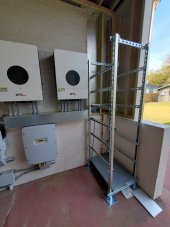Those of you far smarter talk than me discuss complicated ways to protect your (operating) chargers and inverters, but I am going to put my components with circuitry in faraday cages, as my interest is solar is prep for Armageddon. As I understand, panels should survive an EMP and many batteries, as they have no circuitry.
But so many batteries have “BMS” (management systems), especially the LiPo , which means circuitry and EMP vulnerability. First, will such batteries function if their BMS circuitry disintegrates. I was thinking that the BMS is just monitoring, and not really affecting the flow of charge, that the battery terminal would go , without a break, into the storage apparatus. Comments?
Second, would other battery types be a better choice to withstand an EMP out of a faraday cage?



